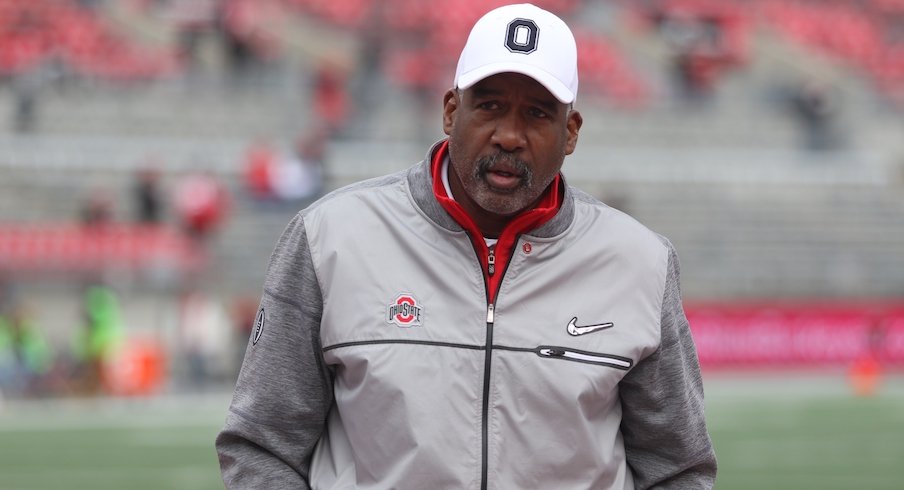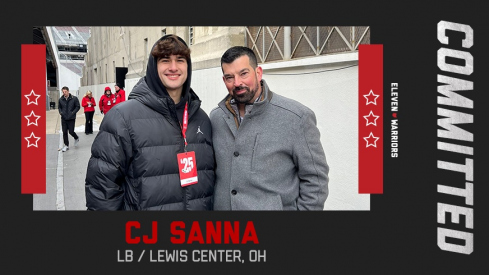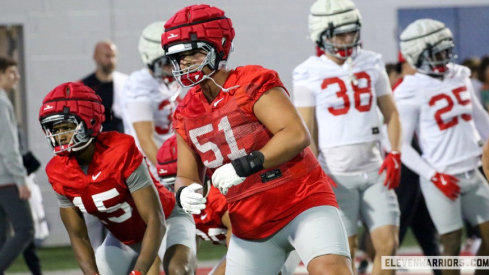When NCAA eligibility issues surfaced for two of the most prominent athletes in college sports last week, their respective schools opted to handle their situations in very different ways.
At Memphis, where star freshman basketball player James Wiseman was ruled ineligible by the NCAA on Friday, the university sought and received a temporary restraining order from a local judge that allowed him to continue playing for Memphis now, but could ultimately lead to sanctions for the Tigers later if it is determined that they knowingly played an ineligible player.
Ohio State, on the other hand, didn’t take any chances when it found out that Chase Young might have committed an NCAA violation.
After receiving information two Sundays ago, the day after Young’s four-sack game against Wisconsin, that accused Young of committing an NCAA violation, the university took immediate action. Ohio State’s compliance department reached out to Young that day, and after Young admitted that he was guilty of the action in question, the university immediately moved to suspend him.
Because Young admitted guilt and Ohio State determined that his action would be deemed a violation, Ohio State athletic director Gene Smith felt that was the move that had to be made.
“We felt there was enough fact that a violation occurred,” Smith said in a press conference on Wednesday. “And so what you do is you make a business decision: You sit him now, or you sit him later. Because he was gonna sit.
“This is what we typically do. As soon as you know a violation occurred, you don’t put everybody else at risk.”
After Ohio State made the decision to withhold Young from last week’s game against Maryland, the NCAA ruled Wednesday that he would be suspended for one more game, but after that would be reinstated and able to return for the Buckeyes’ game next week against Penn State.
Smith said Wednesday that while Ohio State sought immediate reinstatement for Young and could have chosen to appeal the NCAA’s ruling, with the possibility that an appeal would be made in his favor in time for him to play against Rutgers on Saturday, Ohio State and the Young family collectively decided to accept the NCAA’s decision.
While Smith said he could not discuss specific details of the violation Young committed because of the Family Education Rights and Privacy Act, he said Young was ruled to be in violation of NCAA Bylaw 12.1.2.1.6, which bans “preferential treatment, benefits or services because of the individual’s athletics reputation or skill or pay-back potential as a professional athlete, unless such treatment, benefits or services are specifically permitted under NCAA legislation.”
Young said in a statement via Twitter last week that he accepted “a loan from a family friend” that he had known since the summer before his freshman year at Ohio State. The Athletic’s Bruce Feldman later reported that the loan was used to pay to fly his girlfriend to last season’s Rose Bowl. Young had already repaid the loan in full earlier this year.
Based on NCAA guidelines, Young could have been suspended for as many as four games, but the NCAA deemed that a two-game punishment was sufficient. Smith said that Ohio State likely would have appealed if he had been suspended for three or four games.
From the beginning of the process, though, Smith felt it was important for Ohio State to be forthright and cooperate fully with the NCAA – even though Young’s violation was reported to Ohio State directly and not the NCAA – and said he never would have considered handling the situation any other way.
“We never cover anything up,” Smith said. “We’re never going to do that. In my 34 years of doing this business, I’ve never even thought about doing that. You own certain things in life, as an individual, and my integrity’s all I got. And nobody’s going to take that from me.
“I may make mistakes, I may say things wrong, I may do things wrong, but it’s coming from the right place. So no, that’s not even a thought of mine. And if someone asked me to do that, I’m history. It’s that simple. We’re going to do it the right way, regardless of the circumstances. Whatever the outcome is, it is what it is. I’m not going to jeopardize my integrity, and the integrity of my institution and what we’re trying to teach these young men and young women.”
Smith believes that because everyone at Ohio State, including Young and his family, were forthright about the situation, they were able to come out of it with a favorable outcome. Young will still have the opportunity to play in the Buckeyes’ marquee games against Penn State and Michigan to end the regular season, and even more importantly, Ohio State will not face any sanctions as a program – which could have been a possibility if it had played Young after learning he committed a violation without reporting it to the NCAA.
Smith said that Young apologized to his teammates “right off the bat” after the violation came to light, and was “highly cooperative” throughout the process. In turn, Ohio State did its part to work with the NCAA in hopes of getting Young reinstated as quickly as possible, though Smith said he first checked with Young to ensure that the draft-eligible junior wanted to continue playing for the Buckeyes instead of moving on to the NFL.
“He could have not cooperated and tried to cover it up and say ‘I’m going pro.’ No, he wanted to come back and play with his brothers,” Smith said. “So at the end of the day, he was transparent, he was honest, he was forthright. That’s what you want in your student-athletes. And that’s how we have to behave.”
“We never cover anything up. We’re never going to do that. In my 34 years of doing this business, I’ve never even thought about doing that. You own certain things in life, as an individual, and my integrity’s all I got. And nobody’s going to take that from me.”– Ohio State athletic director Gene Smith
Moving forward, Ohio State plans to use Young’s situation as an example to educate its student-athletes on NCAA compliance issues, and Smith anticipates that Young – at least as long as he’s still on campus – will be willing to help with that education process.
“I’m sure, as we move forward, as we ask him to have conversations with other teams, then he’ll do that for us, I’m sure to talk about his experience and what type of things you need to avoid,” Smith said. “Student-athletes respond better to student-athletes than they do to old heads like me. So fortunately, we’ll have him for a little while, and hopefully he’ll help us and I’m sure he will.”
Smith, who is currently serving as the co-chair of an NCAA working group that is advising the Board of Governors how to proceed forward with policy changes that would allow student-athletes to benefit from their name, image and likeness, acknowledged that the violation Young committed might no longer be a violation if the NCAA updates its rulebook, and that it can be debated whether the bylaw Young violated should be changed.
As the rules currently stand, however, Young was in violation of NCAA rules, and that was enough for Ohio State to take immediate action once it found out that the violation had occurred.
Smith declined to specify who informed Ohio State that Young had committed a violation, but was adamant that the information did not come to them from Maryland or Penn State in an attempt by one of those teams to keep Young out of Ohio State’s games against those teams.
“I want to be clear that the accusations did not come from anyone from Maryland, did not come from anyone from Penn State or any other school in the Big Ten conference,” Smith said.


